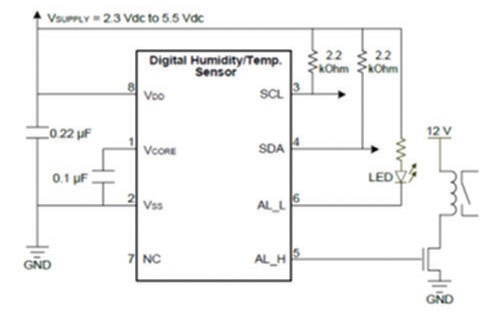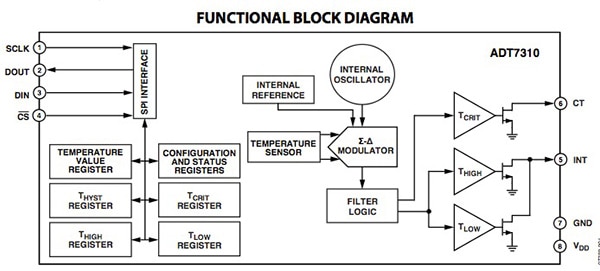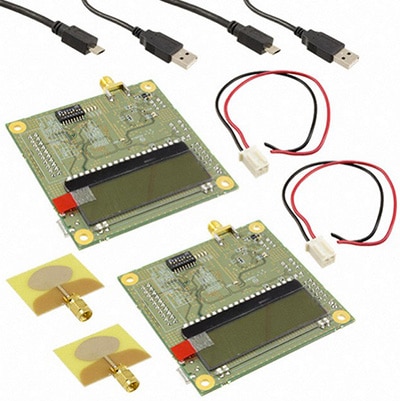Sensors Find their Way into the Corn Field
投稿人:电子产品
2015-04-30
Family-based farming used to be a time- and labor-intensive occupation where farmers used their experience, their seat-of-the-pants intuition, or the Almanac to best prepare for a long and hopefully fruitful growing season. Today, however, farming has turned into a highly sophisticated technology-based vocation in which vital information is provided by sensor-based tools. Consequently, in laboratories researchers are knee deep in matching crops to soil types and weather conditions. Also, with the influx of technology and scientific complexity, agriculture-based degrees have become one of the fastest growing learning tracks in the university curricula.
High demand for food crops, environmental impact considerations, and increasing farm profitability have given rise to the use of sensors to improve accuracy and reliability across every aspect of farming.
It’s not that farmers do not sit on their tractors in the field. They do. However, now they are also likely to be found at a desk in front of their laptops. Planting, spraying, counting seeds, monitoring yield, and measuring the soil’s moisture levels are all either run or planned via the laptop—all the way to ascertaining the health status of this year’s crop via infrared sensors and using software models to predict next year’s planting season.
Farmers want to irrigate and apply pesticides using real data and accurate delivery systems. Irrigation, for example, can be improved with the use of ultrasonic sensors that read the ground’s profile and move a boom up and down, delivering water exactly where needed. Nitrogen, in the form of anhydrous ammonia, is sprayed in the same way and using sensors only when and where needed.
Relatively cheap drones loaded with advanced imaging sensors can – for less than $1000 – improve crop yields. The sensors depict vegetation in near-infrared light showing chlorophyll levels, while software translates the aerial shots into a high-res map. More accurate, given its proximity, than satellite systems, these drones use MEMS accelerometers, gyroscopes, magnetometers, pressure sensors, and GPS modules, as well as powerful processors. The result is a pattern that highlights irrigation problems and soil variation, as well as pest and fungal infestations not visible on the ground. The image sensors can harness infrared and the visual spectrum to highlight differences between healthy and distressed plants.
An electronic nose can even come into play in farming. Since plants release volatile organic compounds (VOCs) as a byproduct, specific VOCs are indicative of both the crop and field conditions. Humidity, light, temperature, soil condition, fertilization, insects, and plant diseases all affect their release, so an electronic nose based on overlapping gas sensors in an array can be used to detect crop diseases and insect infestations.
Flow, position, force, tilt, liquid level and a wealth of other sensors have all made their way onto the farm. Let’s look at a few examples.
Light, moisture, and temperature
Remote spectral sensing of crops is an important tool. When sunlight hits the crop or soil surface, light is reflected, absorbed, or transmitted, depending on the wavelength of the light that is unique to plant species and conditions. Spectrometers or digital cameras can be mounted on a tractor, drone or satellite to gather data. The spectral measurements of plants provide valuable information about the vegetation status and the content of different plant ingredients. The generated spectra are interpreted and generate quantitative data about characteristics, such as the nitrogen need, maturity, water content, and biomass. The measurements are carried out directly in the field, where the plants are monitored over the entire growth phase.
For these applications high resolution, field-portable UV-VIS-NIR-SWIR spectrometers are available that use photodiode optical sensor arrays. These parts can use silicon, germanium, or InGaAs sensors together with built-in and/or removable filters.
How much water actually is in the soil is one of the most critical bits of information in farming. Honeywell Sensing and Control HIH6130/6131 Series sensors (Figure 1) feature humidity and temperature sensors co-located in the same package. This allows the relative humidity measurements to be temperature compensated and provides a second, standalone temperature sensor output. It also controls costs by allowing users to purchase one sensor instead of two.

Figure 1: Typical application circuit, Honeywell HIH6130.
The sensor can be used in low-energy and wireless-compatible applications to enhance energy savings and prolong system battery life. High 14-bit humidity-sensor resolution and 14-bit temperature-sensor resolution help the user’s system detect the smallest relative humidity or temperature change. The multilayer construction of the device provides resistance to condensation, dust, dirt, oils, and common environmental chemicals typically found in agriculture.
Environmental monitoring typically also involves such temperature sensors as the ADT7310 ±0.5°C Accurate, 16-Bit Digital SPI Temperature Sensor by Analog Devices. Used in environmental-control systems, computer-thermal monitoring, and thermal-protection applications, the ADT7310 (Figure 2) is a high-accuracy digital temperature sensor in a narrow SOIC package. It contains a band-gap temperature reference and a 13-bit ADC to monitor and digitize the temperature to a 0.0625°C resolution. The CT pin is an open-drain output that becomes active when the temperature exceeds a programmable critical temperature limit.

Figure 2: The ADT7310 functional block diagram.
Wireless networks
Since agricultural sensor networks often involve wireless connectivity, RF technology is finding many applications. Take, for example, the DecaWave DW1000 ScenSor (Seek Control Execute Network Sense Obey Respond), which is optimized for applications in real-time location systems and wireless-sensor networks across a variety of markets, including agriculture. This is a single-chip wireless transceiver based on ultra-wide-band techniques compliant with the IEEE802.15.4-2011 standard. Highly immune to multipath fading, it allows reliable communications in high-fading environments. To assist engineers in using its DW1000, DecaWave offers its EVK1000 evaluation kit. The EVK1000 (Figure 3) provides all HW and SW elements to perform a two-way ranging evaluation, including range accuracy, precision, sensitivity, multipath immunity, and more.

Figure 3: Adding RF technology to the farm? Here’s the EVK1000 Evaluation Kit for the DW1000 to assist.
Not to be outdone by drones, new tractors often come with factory-installed Glonass-enabled GNSS receivers (such as the Linx RXM-GNSS-GM-T), as well as displays and controllers to handle uneven terrain. John Deere tractors and agricultural combines feature integrated guidance systems and factory-installed yield mapping and harvest documentation capabilities.
Farmers can use the systems provided for their vehicles, or create their own maps by uploading soil and yield history data and aerial imagery into farm management software. By sending the maps to the tractor guidance systems via wireless networks they will have a farm-wide system.
In summary there has been a long-standing trend for children raised on farms not to return after college. Now that trend is reversing since the occupation is less labor intensive and substantially more intellectually challenging than ever before. From using zoomy drones to farming-by-laptop, tomorrow’s farmer will indeed be impacted by the Internet of Things. As a result, sensors of many types will continue to play a vital role in providing the necessary information to improve farm productivity and efficiency.
For more information on the parts discussed in this article, use the links provided to access product information pages on the DigiKey website.
免责声明:各个作者和/或论坛参与者在本网站发表的观点、看法和意见不代表 DigiKey 的观点、看法和意见,也不代表 DigiKey 官方政策。









